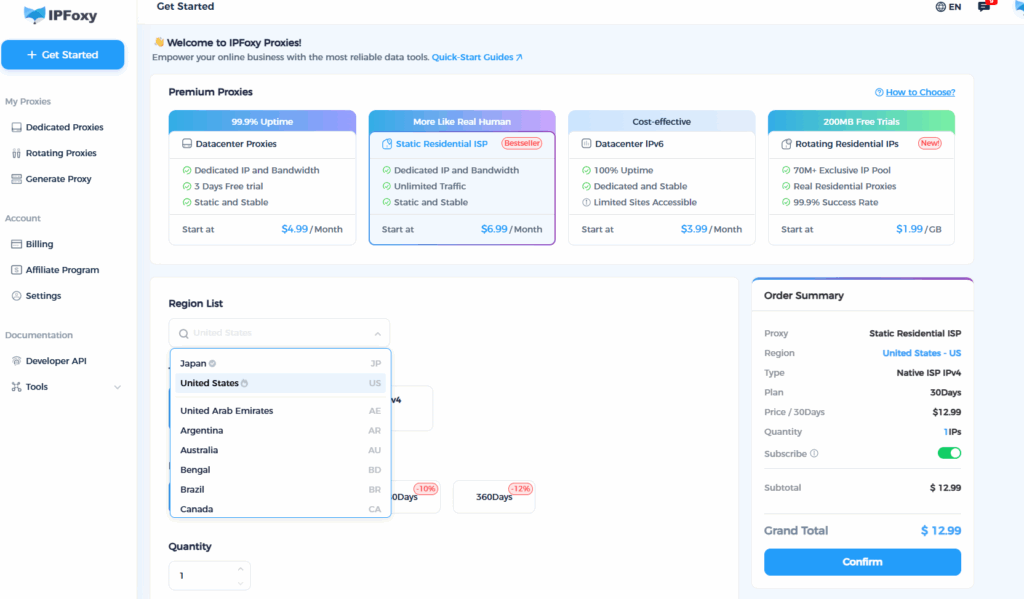On Amazon, the review system plays a critical role in product exposure and conversion. Many sellers or internal review teams want to boost initial sales and gather early reviews through “self-managed review accounts.” Especially for sellers with a limited budget who don’t want to rely on third-party review services long-term, building their own review account system has become a trend.
However, “self-managed accounts” are not as simple as registering a few buyer accounts. If the environment and actions are not handled properly, accounts will easily trigger Amazon’s risk control, resulting in bans or reduced account trust. This guide will explain what Amazon self-managed review accounts are, their use cases and risks, and provide a full step-by-step walkthrough of environment setup and account operation.
Contents
- i. What Is a Self-Managed Review Account and When Should It Be Used?
- iI. Full Environment Setup Guide for Beginners
- Summary
i. What Is a Self-Managed Review Account and When Should It Be Used?
1.Definition
A self-managed review account refers to a buyer account created and operated by the seller themselves. These accounts are used to browse products, add to cart, place orders, and leave reviews—simulating real user behavior to test conversion, boost product ranking during launch, or run long-term traffic experiments.
2. Practical Purposes
- Test conversion: Observe click-through, dwell time, add-to-cart, and checkout paths to identify where users drop off.
- Boost initial ranking: During the cold start phase, a new product has no engagement. Self-managed accounts help break the “no activity, no exposure” loop.
- A/B testing: Test images, prices, and listing copy to optimize continuously.

iI. Full Environment Setup Guide for Beginners
1. Device & Network Isolation
The first step to keeping review accounts alive is not account registration, but building an environment that cannot be linked by Amazon’s detection system. Amazon tracks browser fingerprints, IP addresses, DNS routes, cookies, device hardware parameters, and more. If multiple accounts share similar patterns, they will be flagged and connected to a single operator identity.
a. Browser Fingerprint Isolation
Whether working solo or managing a review team, never operate multiple accounts on the same browser or device. This leads to immediate fingerprint overlap.
Recommended setup:
- Assign one dedicated fingerprint browser profile per account
- Disable WebRTC to prevent IP leaks
- Match language, time zone, and system region with the account’s registration country
- Do not share browser cache, cookies, or local storage. Clean them regularly
b. IP Isolation
Device isolation is only half the story—the actual key lies in your network path. Even with separate devices, if the IP range, DNS node, or ISP information looks similar, accounts can still be linked.
IP usage rules:
- Each account must use a dedicated IP
- Only use clean, high-trust residential IPs—do not use cheap data center or public proxy pools
- The IP location must match the account region (e.g., US residential IP for a US Amazon account)
- Network latency should be stable—frequent disconnections or IP switching will trigger “unusual login” warnings
Recommended service: IPFoxy Residential Proxy
IPFoxy provides high-quality residential IPs across major regions, supports HTTP/SOCKS5 protocol, and allows you to assign one unique IP per Amazon account to reduce detection risks.
It also supports static residential IPs, ideal for long-term account binding to avoid IP switching alerts. Easy to integrate with fingerprint browsers.

2. Account Registration
Once the environment and IP setup are stable, you can move to account registration and initial “warm-up” actions to build account trust.
Preparation checklist before registration:
- Email/Phone number: Use region-matching real or virtual numbers
- Shipping address: Realistic addresses (freight forwarding addresses can work if used carefully)
- Payment card / Credit card: Ensure valid payment capability. Virtual cards and gift cards can be backups
- Randomized personal details: Slight variations in name formatting, spacing, typos, or case sensitivity help simulate real human input
3.Activity Pattern Warm-Up
Recommended behavior sequence:
- On the first login, don’t rush to your own product. Browse random categories like a normal user
- A few days later, enter your listing via keyword search or ads and stay for varied amounts of time
- Don’t add to cart or buy every time—uncertainty mimics real user hesitation
- Avoid logging in at the same fixed time daily—this looks like automation
- Worst-case scenario (high ban risk): New account places an order within hours of creation and buys the same product every time
4.Placing Orders, Receiving, and Leaving Reviews
- Start with low-priced products to build purchase history
- Slightly modify shipping addresses to avoid identical address footprints
- Never use copy-paste review templates. Each account should have unique writing style and personal tone to look organic
Summary
Self-managed review accounts offer high control and data value, but success depends entirely on how well you execute environment isolation and natural behavior patterns. For beginners, securing stable IPs and clean device fingerprints is far more important than rapidly scaling account quantity. A well-set foundation dramatically reduces ban risk and improves long-term account survival.


